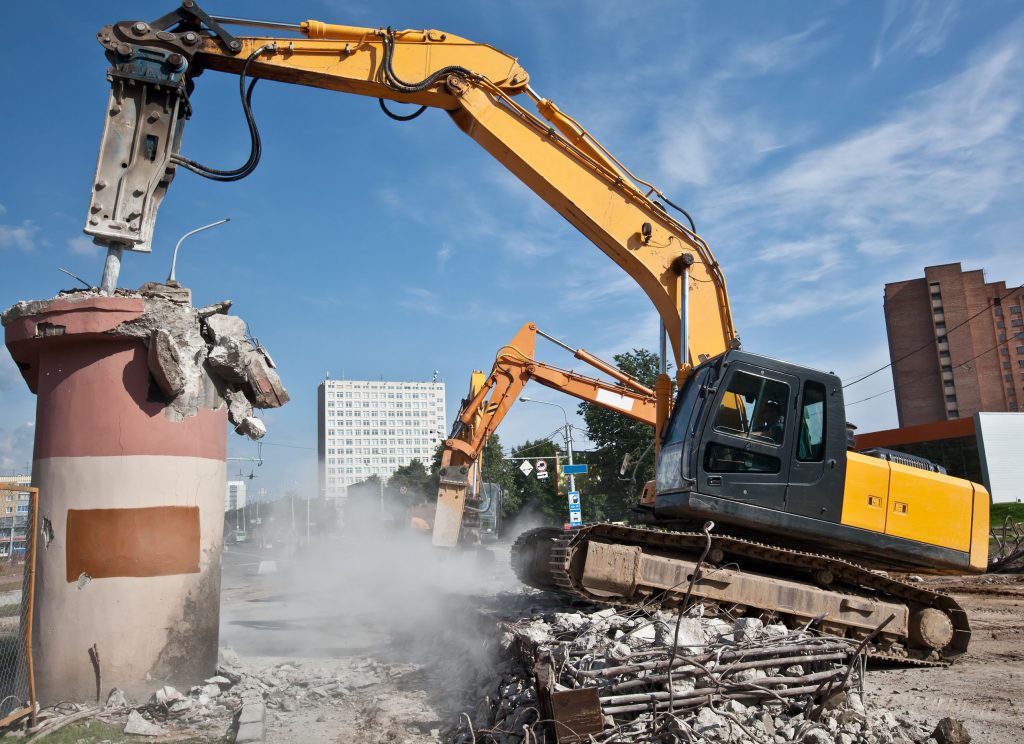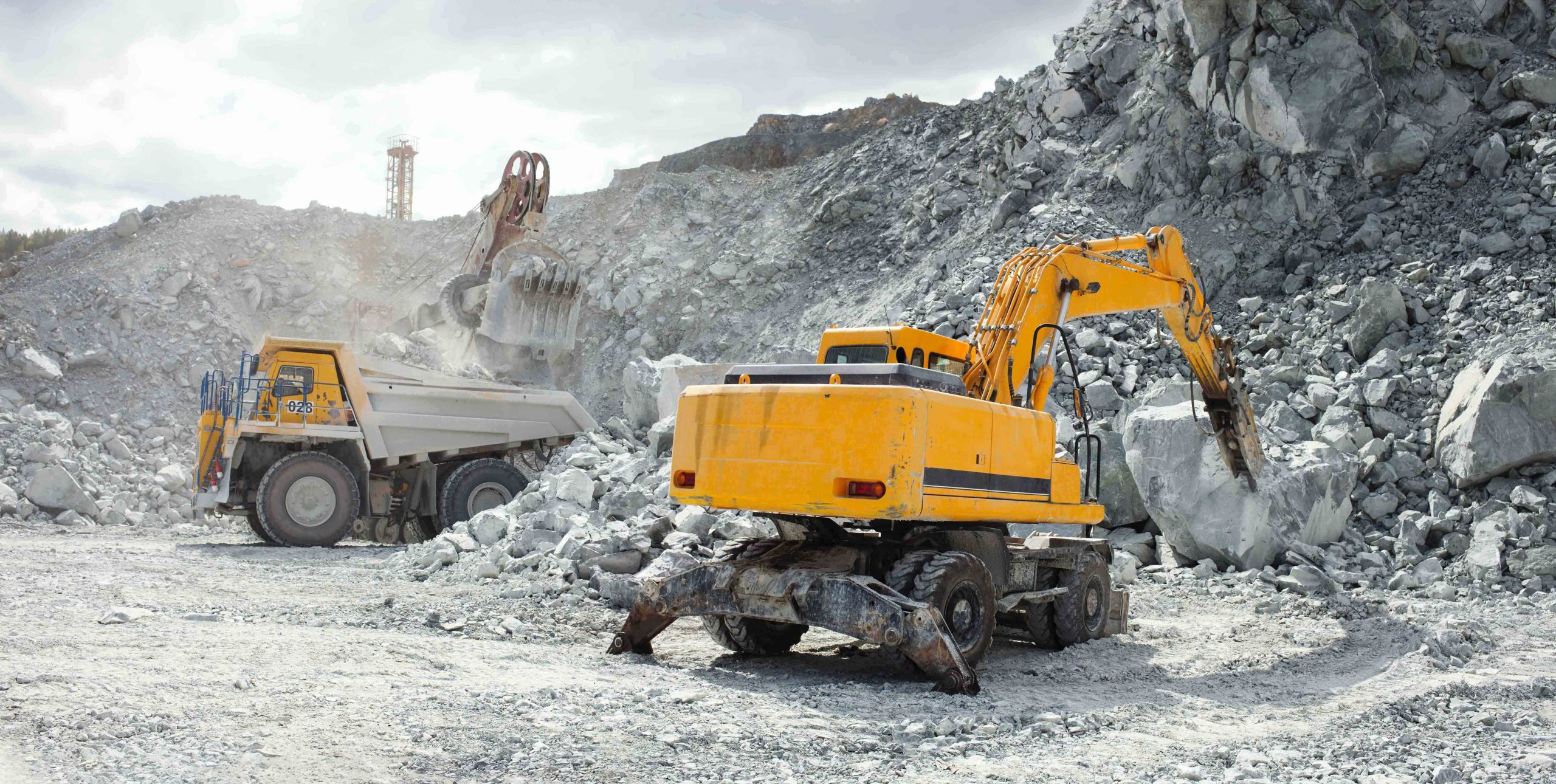The Breakdown on Rock Breaking
Rock breakers are widely used tools used in the mining, construction, and landscaping industries. Rock breakers are a common alternative to explosive devices sometimes used to clear rock. Construction crews often prefer rock breakers as they provide more precision and less unpredictability than other methods. But, like most equipment, each has their own application where they perform better. Choosing the right tool for the job can be overwhelming, but not impossible. Here is everything you need to know about hydraulic rock breakers.
What is a hydraulic rock breaker?
A hydraulic rock break is a type of percussion hammer that is used to break up and demolish hard, rock-like structures like concrete. The term hydraulic comes from the auxiliary hydraulic system which powers this mighty tool. Rock breakers come as an attachment fitted to an excavator. They are characterized by the narrow, pointed shape they hold for maximum precision. Depending on the application, they can vary in dimensions. Some are longer than others and the width is variable.
When are rock breakers used?
Rock breakers are often used in relatively large demolition projects where smaller, hand-held equipment like jack-hammers fall short. Generally, large slabs of concrete or other rock compounds are too dense for traditional tools. Because rock-breakers are operated from within an enclosed machine, they are helpful in situations where the environment may produce unsafe conditions. Flying rock pieces, dust, and other debris could potentially harm a hand-held equipment operator.
How do hydraulic rock breakers work?
Rock breakers function based on the principle of applied force. The machine applies pressure to a small piston in the rock. This large amount of pressure in a small area breaks generates force throughout the hard slab, breaking it relatively efficiently. The weight of the rock breaker head determines the magnitude of the applied force.

Why choose a rock breaker?
Rock breakers are a common choice over traditional rock blasters. They offer a variety of elements that are not often achieved through explosives.
- Safer environment.
As aforementioned, blasting is far more unpredictable than breaking. The blast of the explosives, though they can be semi-contained, is subject to rogue debris, often called flyrock. This can potentially harm a crew member or damage other machinery. Because rock breakers provide the enclosed safety of the excavator and their force is more concentrated, the risk of danger is far lower.
- Less vibration.
Unfortunately, very few construction sites are completely clear of residential areas. The vibrations that result from rock blasting methods can disrupt the surrounding homes and businesses of a job site. Particularly strong vibrations can even damage the structural integrity of the buildings and homes. Rock breakers produce fewer vibrations, reduce noise levels, and go relatively unnoticed by the residents of the region.
- More efficient.
When using explosive methods, the entire area needs to be clear of people and equipment before the blast. This can cause a lot of lulls in the project’s progress, making the entire process much slower. Because of the more precise nature of the hydraulic breaker, there are fewer production delays.
- Better precision.
Rock breakers are a superior option when it comes to more precise force application. The design of the head allows for a more exact force application. Because they are fitted to the flexible arm of the excavator, they are able to extend to previously hard-to-reach places from a safer distance.
- Fewer emissions.
Environmental regulations, especially in the mining industry, are becoming more and more strict. Rock blasting produces the second-largest amount of gas emissions into the atmosphere, after haul trucks. Rock breakers are better for the environment and fall more in line with the ever-growing list of emission restrictions.
How do I choose a rock breaker?
There are many types of rock breakers, each designed for a specific use. The main differences from model to model are in the dimensions. They differ in weight and in size. While they are all built from the same steel material, the varying dimensions provide different amounts of force and pressure. The heavier the head of the rock breaker, the more power it has. It can break larger rock slabs more easily and efficiently. On the other hand, lighter heads produce less power. These are often used for breaking smaller rock pieces.
Choose Rasmussen
Rasmussen Equipment has been proudly serving the Utah area since 1947. We are to aid you in any of your construction supply needs. From repairs to rentals to sales and to service, our dedicated team can help you find exactly what you’re looking for. Our collection of rock breaker heads is designed to have something for every project. We offer both the attachment and the paired excavator.
- EPIROC SBU220 HYDRAULIC BREAKER
- EPIROC SBU340 HYDRAULIC BREAKER
- EPIROC SB552 HYDRAULIC BREAKER
- EPIROC MB1200 HYDRAULIC BREAKER
- EPIROC MB1650 HYDRAULIC BREAKER
- EPIROC HB2500 HYDRAULIC BREAKER
- EPIROC HB3100 HYDRAULIC BREAKER
- EPIROC HB4700 HYDRAULIC BREAKER
For more information, call us at 801-972-5588.

